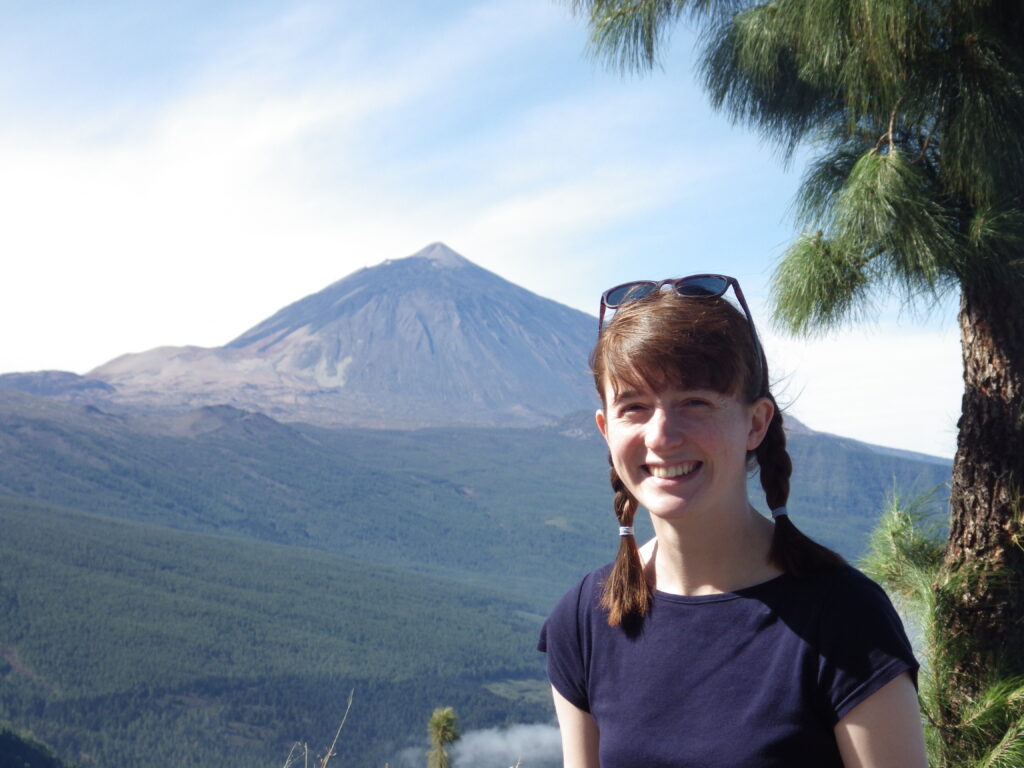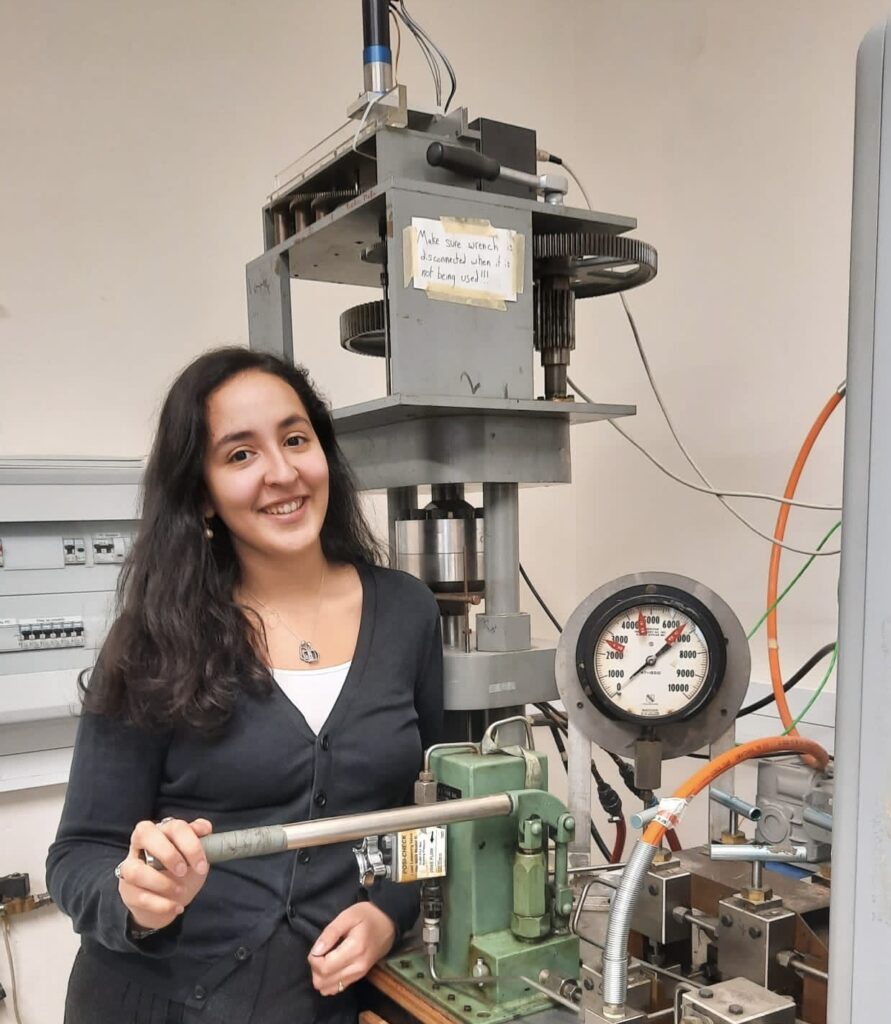Each year at the TSG Annual General Meeting the outstanding work of early career researchers and students is recognised with numerous prizes. These prestigious awards support and celebrate the next excellent crop of researchers within the tectonics and structural geology community. This year’s TSG saw as usual a large number of high-quality posters and presentations, which often made it difficult for the judges to pick a winner. Well done to all the prize winners at this year’s annual meeting, hosted virtually by the Geological Society of London and the Tectonic Studies Group, and thank you to all the judges!
Ramsay Medal
The Ramsay Medal (named in honour of the late John Graham Ramsay) is awarded to an early career researcher who has published an exceptional independent publication resulting from their PhD thesis. After long consideration, the judges awarded this prestigious medal to Sophie Cox from Cardiff University. Her excellent publication “Shear zone development in serpentinized mantle: Implications for the strength of oceanic transform faults.” In the Journal of Geophysical Research combined field and microstructural observations with geochemical analysis to present an evidence-based conceptual model of how deformation and the mode of slip vary along an ocean transform fault.
Sophie is currently a postdoctoral researcher at Cardiff continuing to build on her excellent PhD work in ocean transform fault rheology using a combination of experimental and field-based study.

Dave Johnston Mapping Prize
The Dave Johnston Mapping prize is awarded to the best undergraduate student mapping dissertation in order to recognise outstanding field-based undergraduate work. This year’s prize was awarded to Alice Cunningham from the University of Southampton. Her work on geologically mapping the onshore-offshore geology of Durlston Bay, Dorset integrated high-resolution aerial photography, LiDAR, bathymetry, and fieldwork observations.
The last published geological map of Durlston Bay was completed 30 years prior, so the aim was to interpret and categorise onshore structure and modernise the interpretation by extending observations into the nearshore and offshore zones. Alice is now looking forward to applying her structural interpretation skills to future projects, and she is looking to expand her ability to visualise terrains in 3D during her 4th-year project.

BP Price
The BP Prize is awarded for the overall best student contribution at the TSG annual meeting. This year’s award goes to Cole McCormick for his fascinating talk “An experimental study of the transition from tensile failure to shear failure in Solnhofen Limestone across a range of stress conditions: Does “hybrid failure” exist?”. This work investigated the role of stepped, transgranular, cracks and their interaction to form low-angle shear faults (<10˚). Cole’s presentation challenged the notion that individual cracks were ever subject to combined shear stress and tensile normal stress, while also suggesting that a “hybrid failure” mode may not be appropriate. The judges were particularly impressed by its accessibility and quantity of experiments.
Cole McCormick completed B.Sc. and M.Sc. degrees at the University of Alberta (Canada). For his PhD at The University of Manchester, Cole now finds himself studying diagnostic rock textures in fault-controlled dolomite bodies (e.g., cement-supported breccias, fractures, zebra textures) working with Cathy Hollis and Ernie Rutter. This research integrates conventional carbonate diagenesis techniques (e.g., fieldwork, petrography, geochemistry) with triaxial rock deformation experiments. They are particularly interested in the P/T conditions that gave rise to these rock textures as well as the role of fluid-flow pathways, recrystallization, and self-organization.

BritRock Prize
The BritRock prize is awarded for the best PhD presentation (poster or talk) that incorporates a significant element of laboratory rock deformation during the research. The BritRock prize is awarded and sponsored by BritRock, the UK’s Rock Deformation Network.
This year’s BritRock winner is Claudia Elijas Parra, for “Quantifying crack network evolution during failure of a porous rock”. Among the many things the judging panel liked was the clear explanation of methods and statistical analysis and nice context with current methods” and “how Claudia made a complex set of results look very simple, with a very clear presentation style.”
Mike Coward Prize for Best Student Talk
The winner of the Mike Coward Prize for Best Student Talk was Khadija Alaoui for her talk titled “Element mobility in low-grade shear zones and strain accommodation: insights from geochemistry and microstructures of granitoids of central Pyrenees (Axial zone)”
Khadija is a 2nd year PhD student in metamorphic petrology at Institut des Sciences de la Terre d’Orléans (ISTO) at the University of Orléans, currently working on phyllosilicates deformation and its effect on shear zones formation and fluid circulation (experimental study).
The aim of her PhD project is to investigate the role of micas in strain accommodation and development of shear zones within the upper to middle crust, from the scale of crystal defects to the polycrystalline aggregate. She is combining detailed microstructural and petrological study of the mica-quartz samples experimentally deformed under different temperature and strain rate conditions with the observation of naturally deformed samples. Her PhD is following up on her master’s Project work she presented at TSG and will provide further geological context.

Sue Treagus Prize for Best Student Poster
This year’s winner of the Sue Treagus Prize for Best Student Poster was Bex Robertson for her poster “Investigating co-seismic reactions in fault cores”. The poster was applauded for clarity of layout, quality of the figures and its overall accessibility.
Bex is currently undertaking her PhD at Durham University, working on co and post-seismic reactions within fault cores and their mechanical consequences. This work involves mechanical experiments simulating earthquake conditions in the lab and geochemical breakdown of samples pre and post “event”. The Alpine Fault in New Zealand, a transpressional plate boundary, is used in this work as a field analogue.


Follow Us!